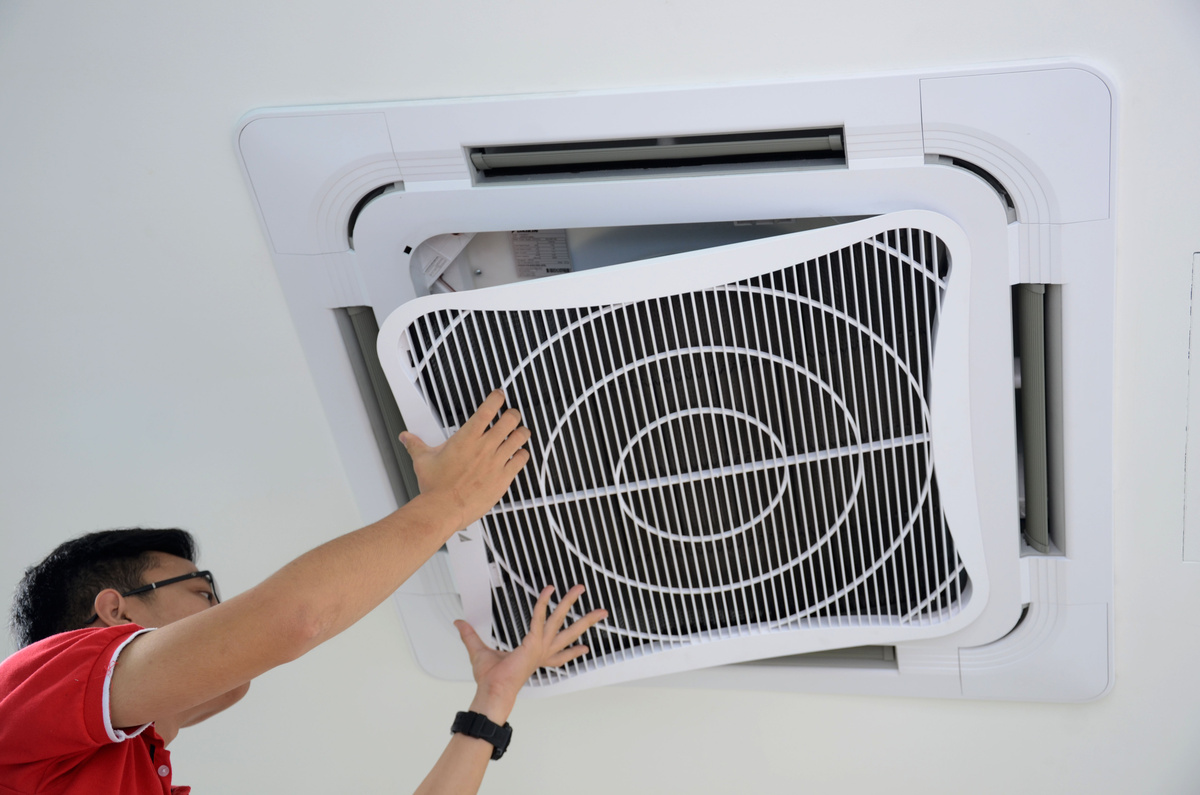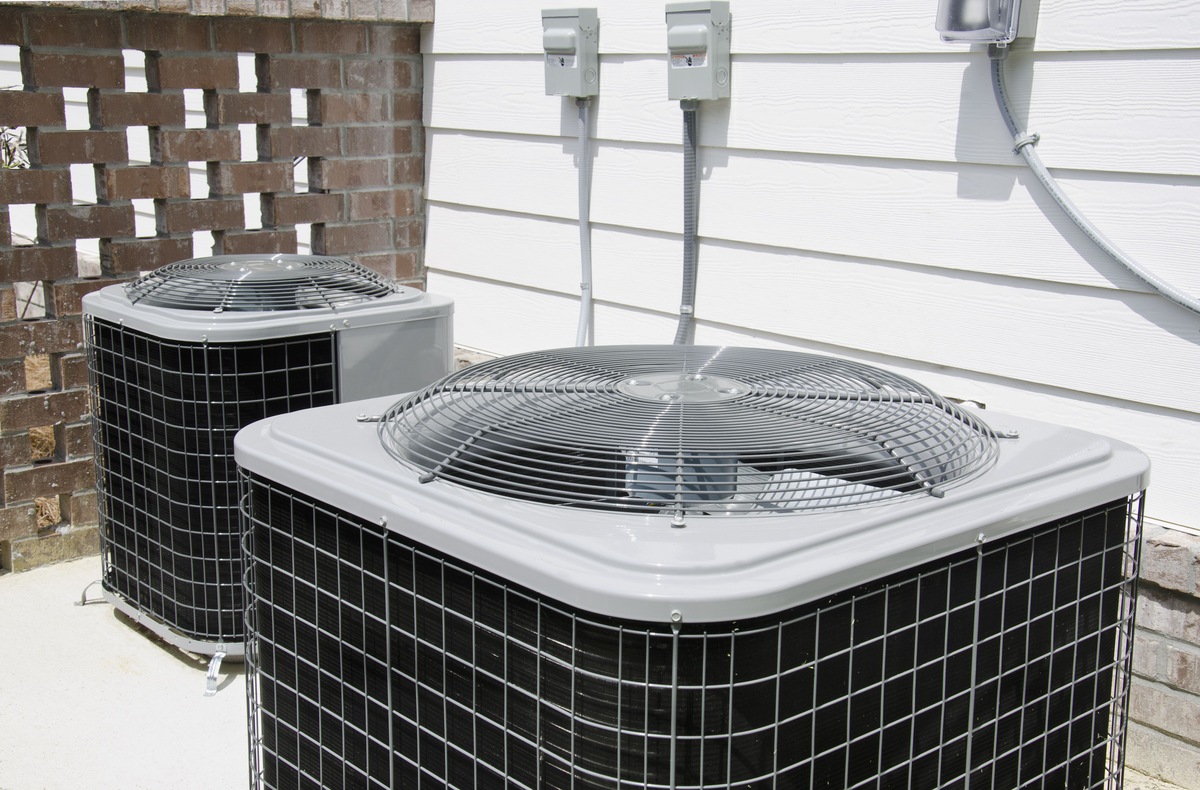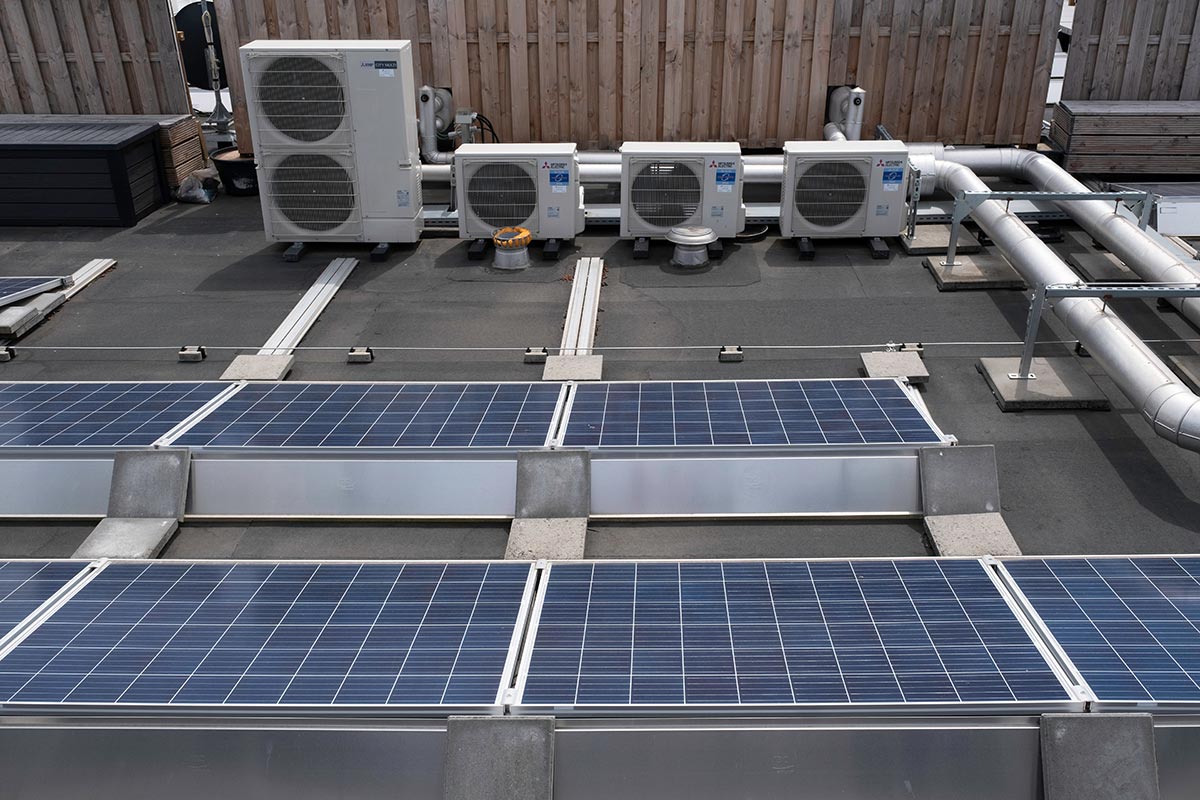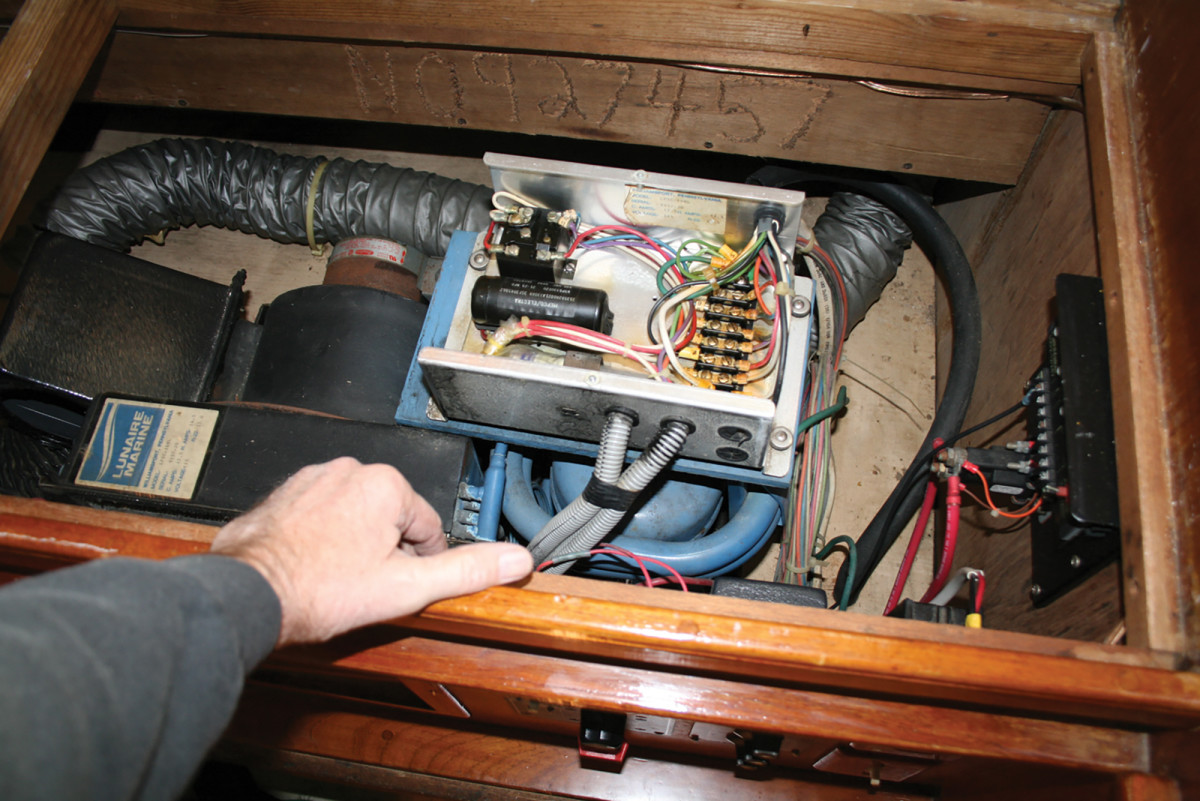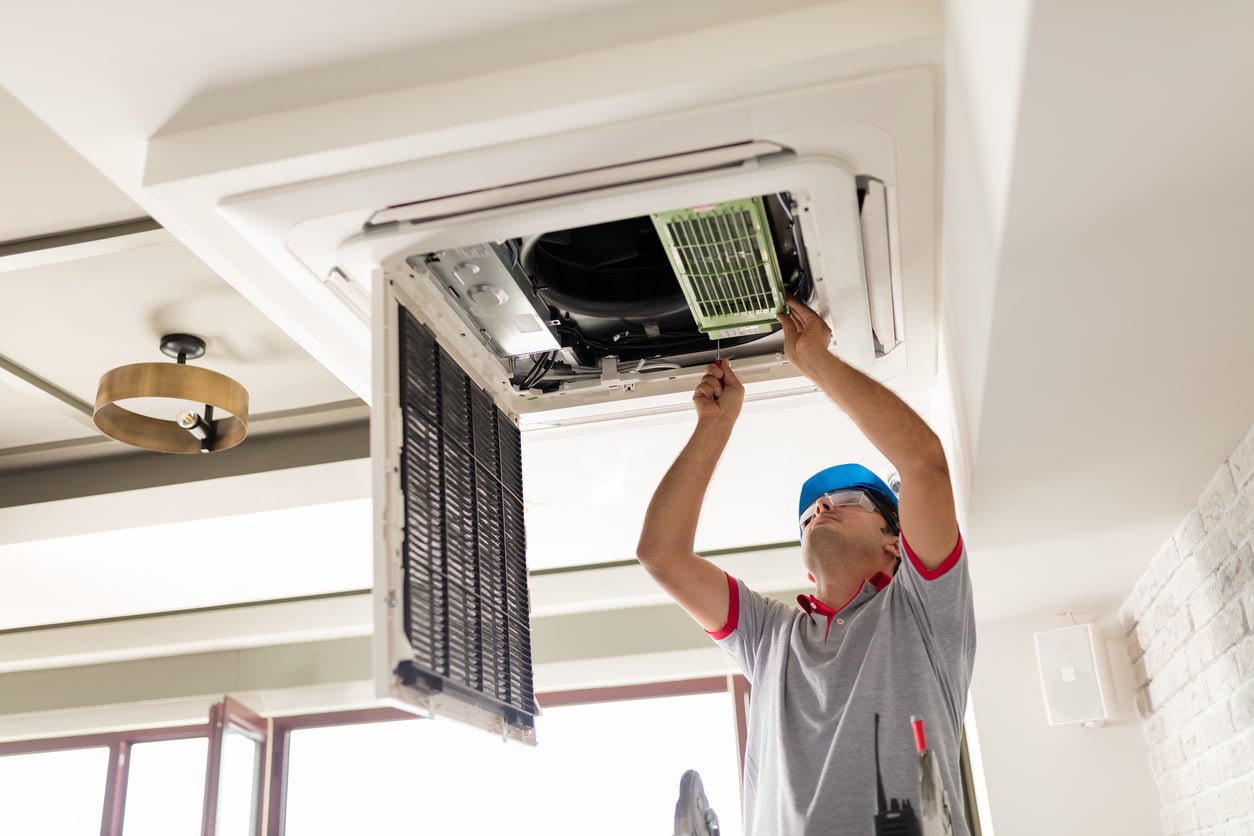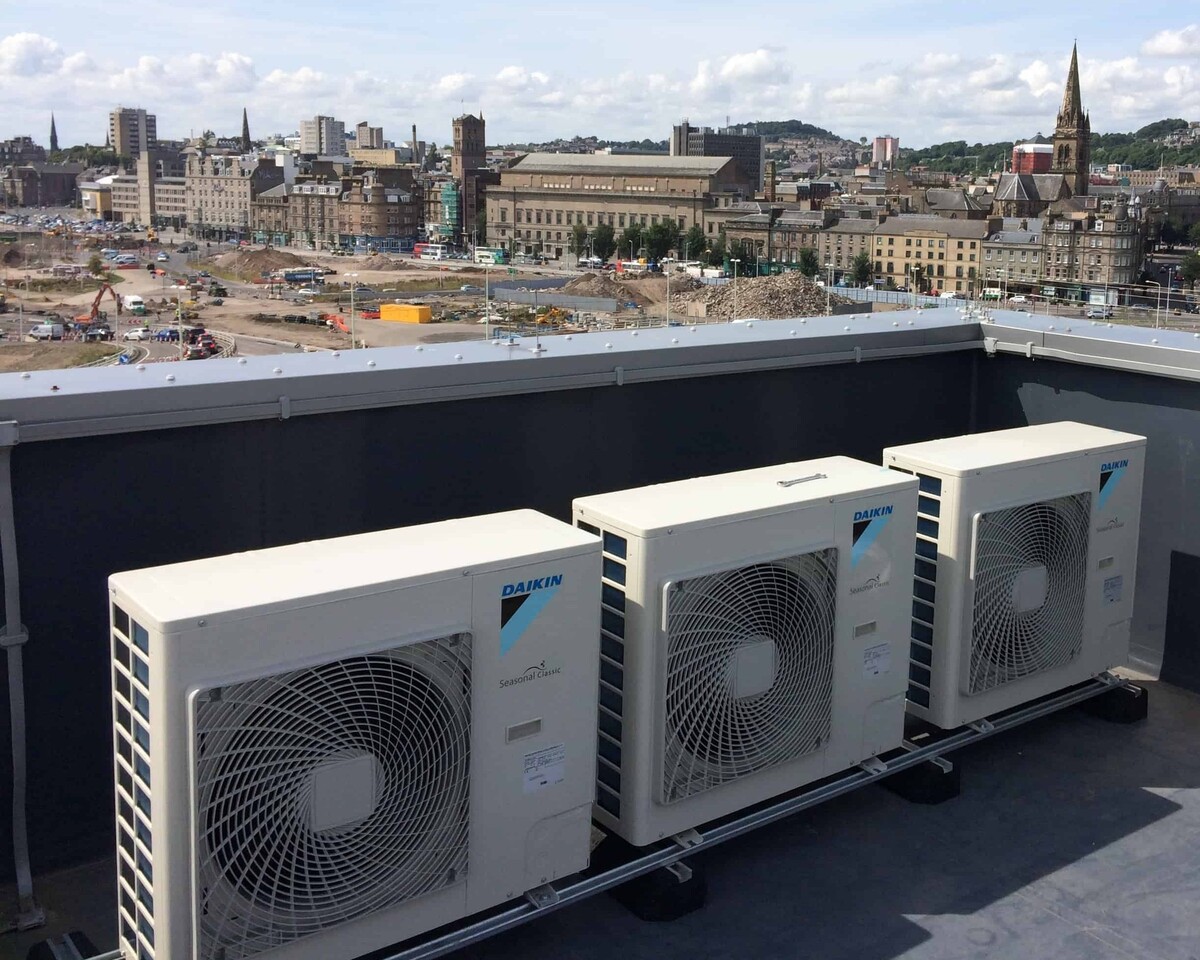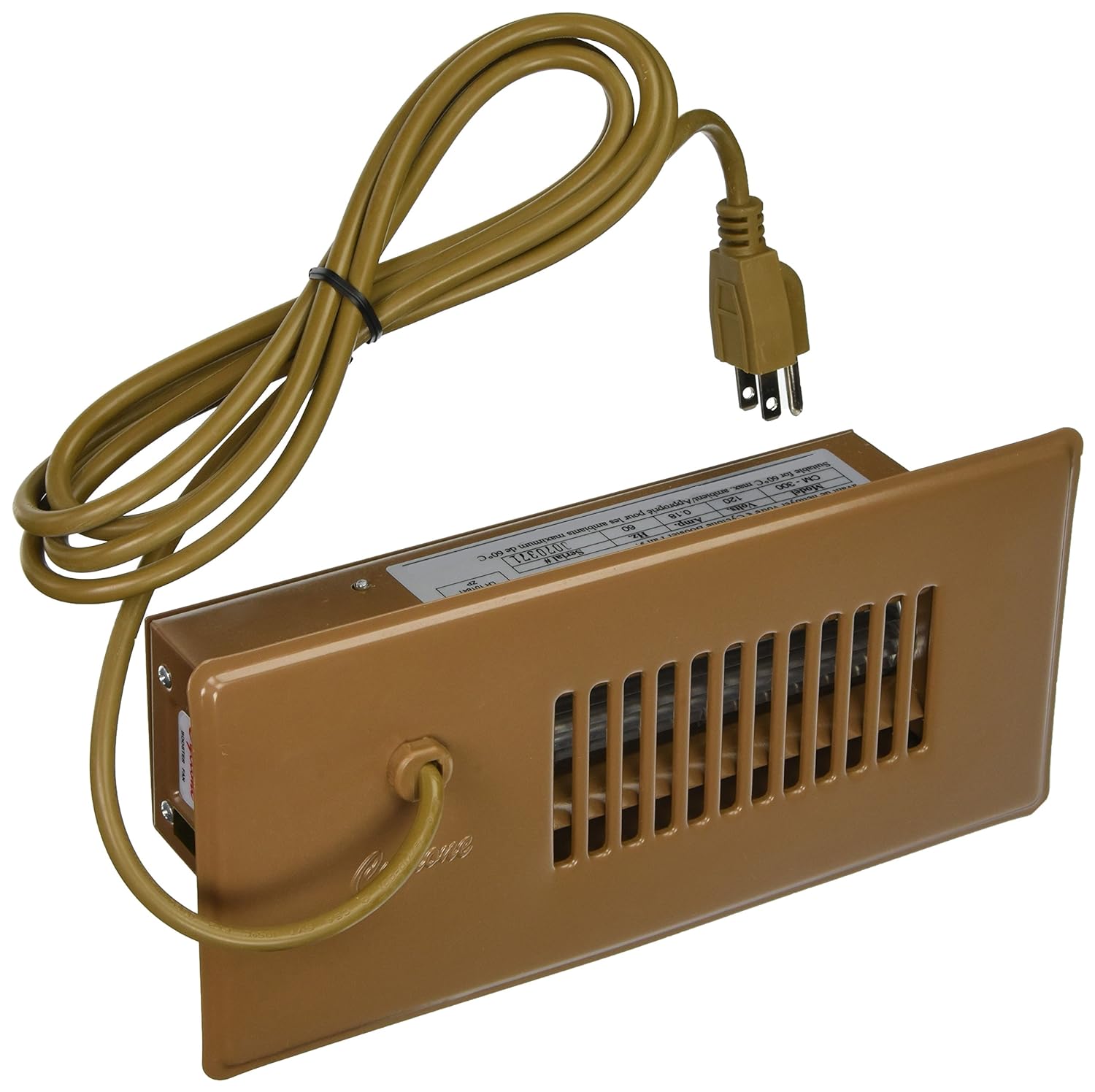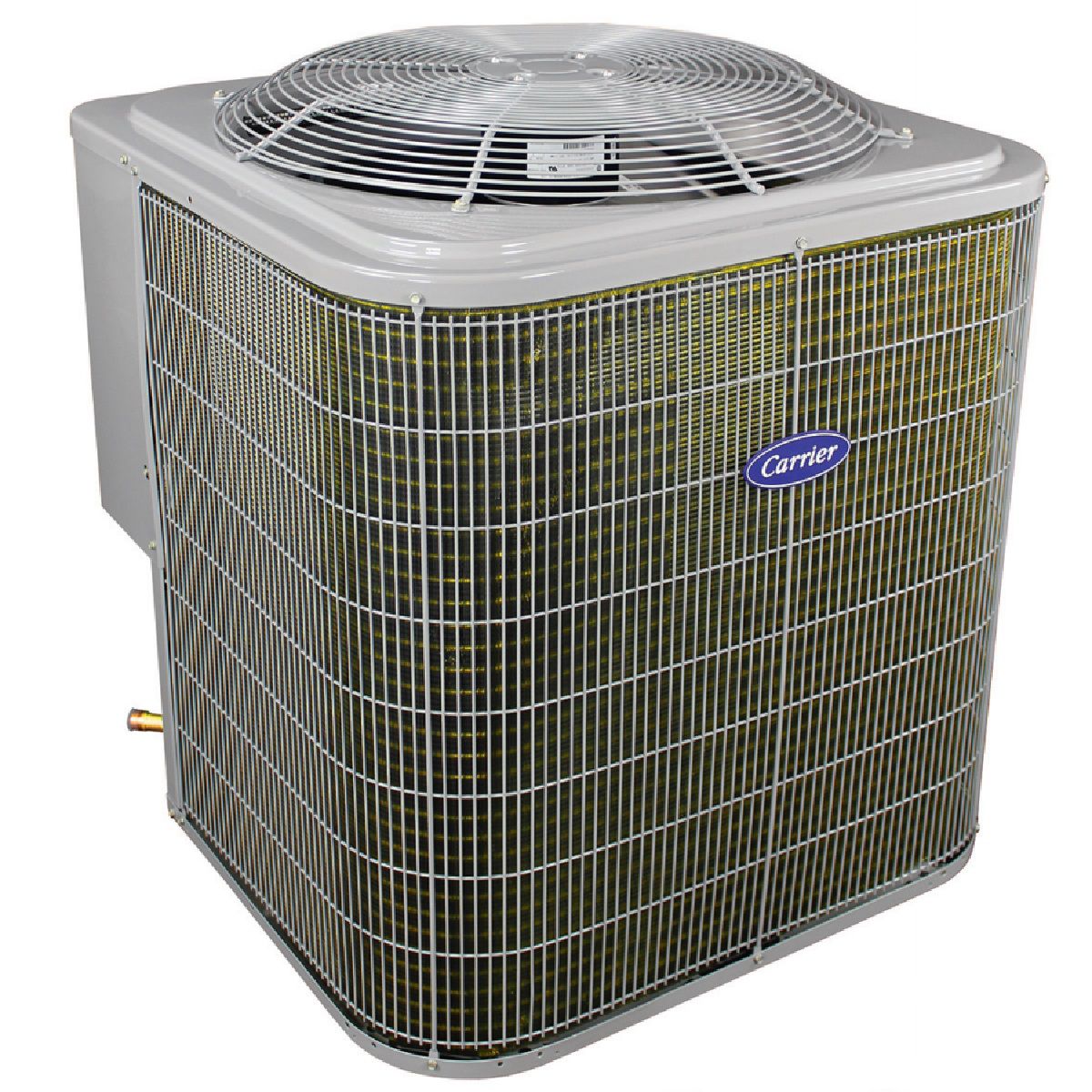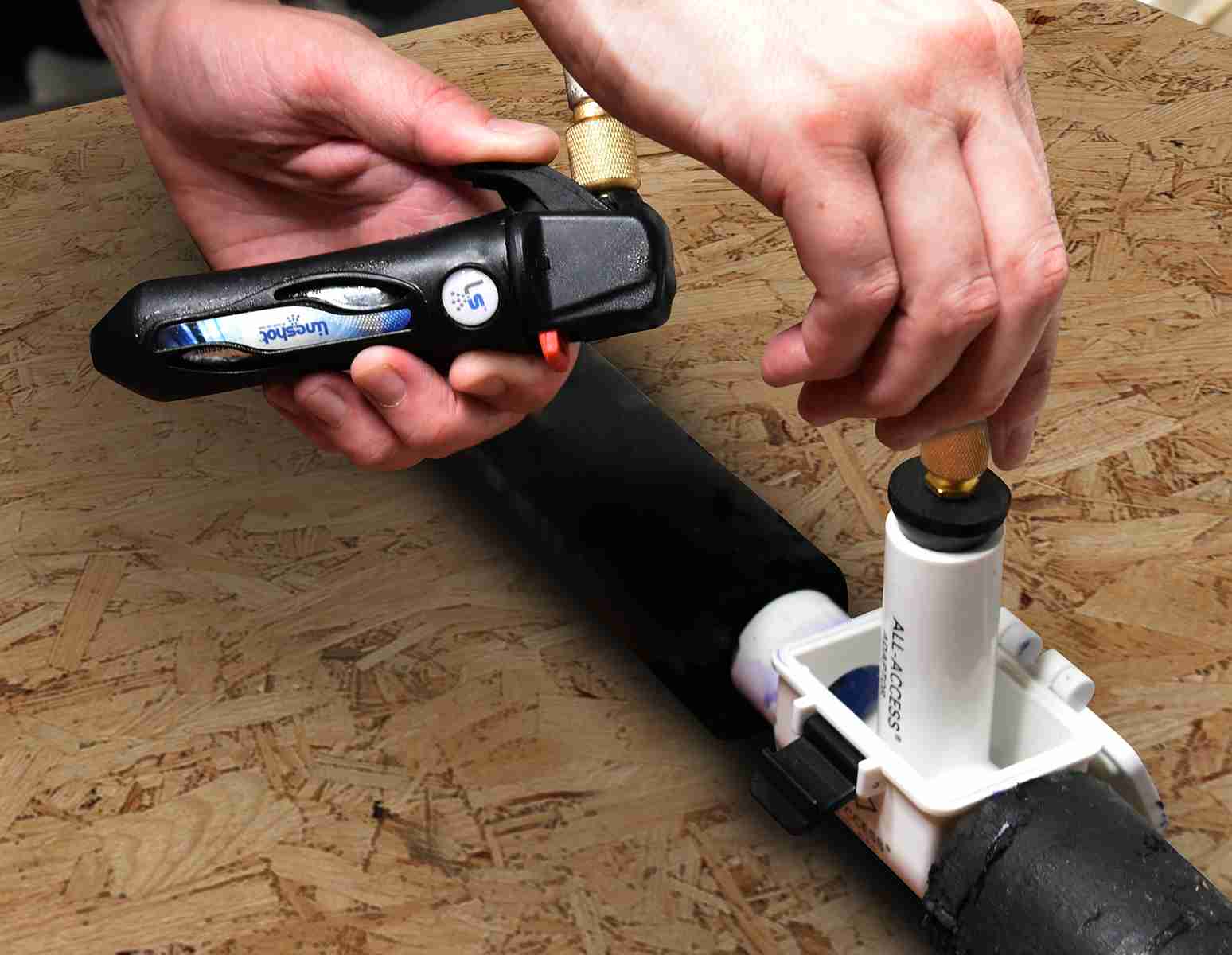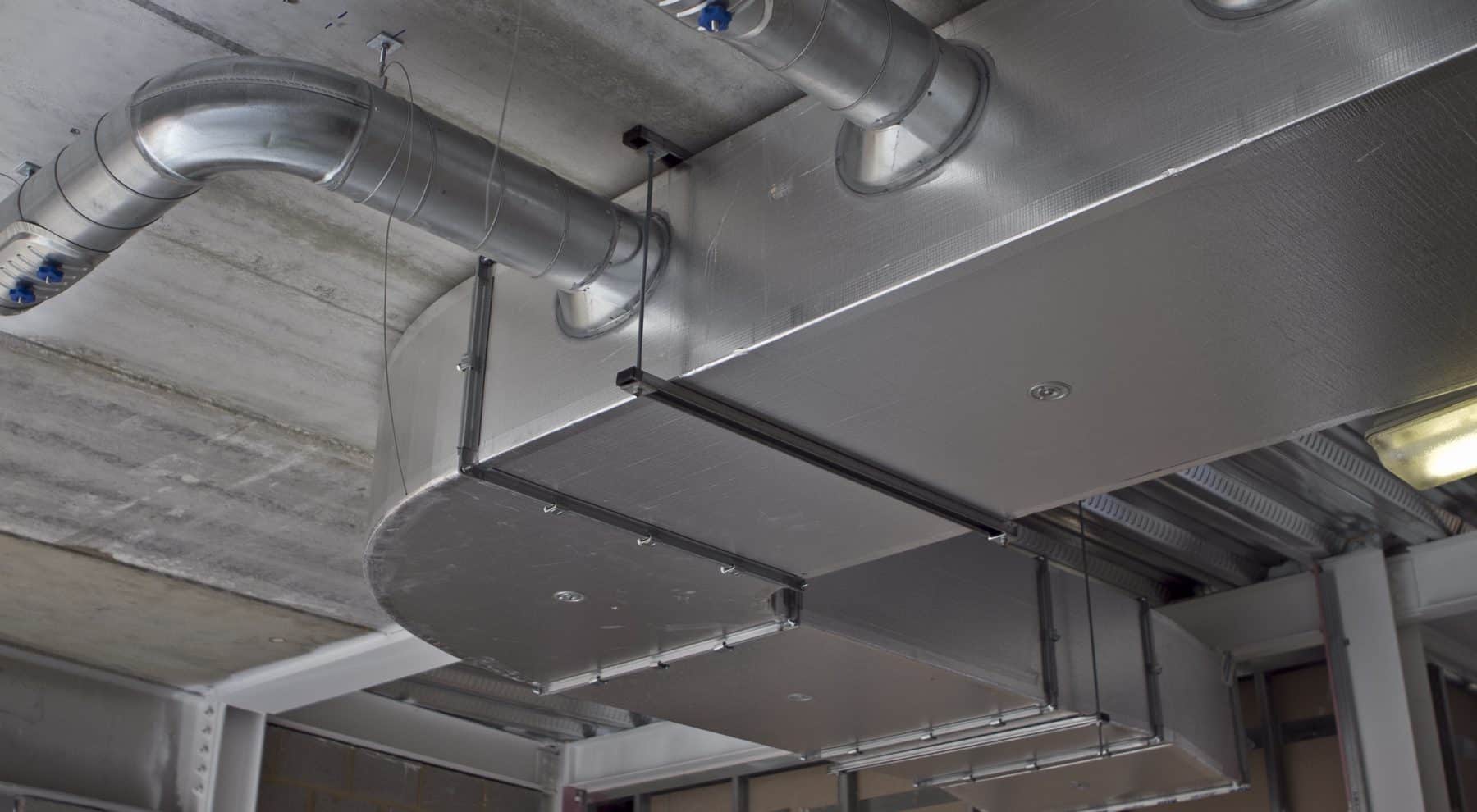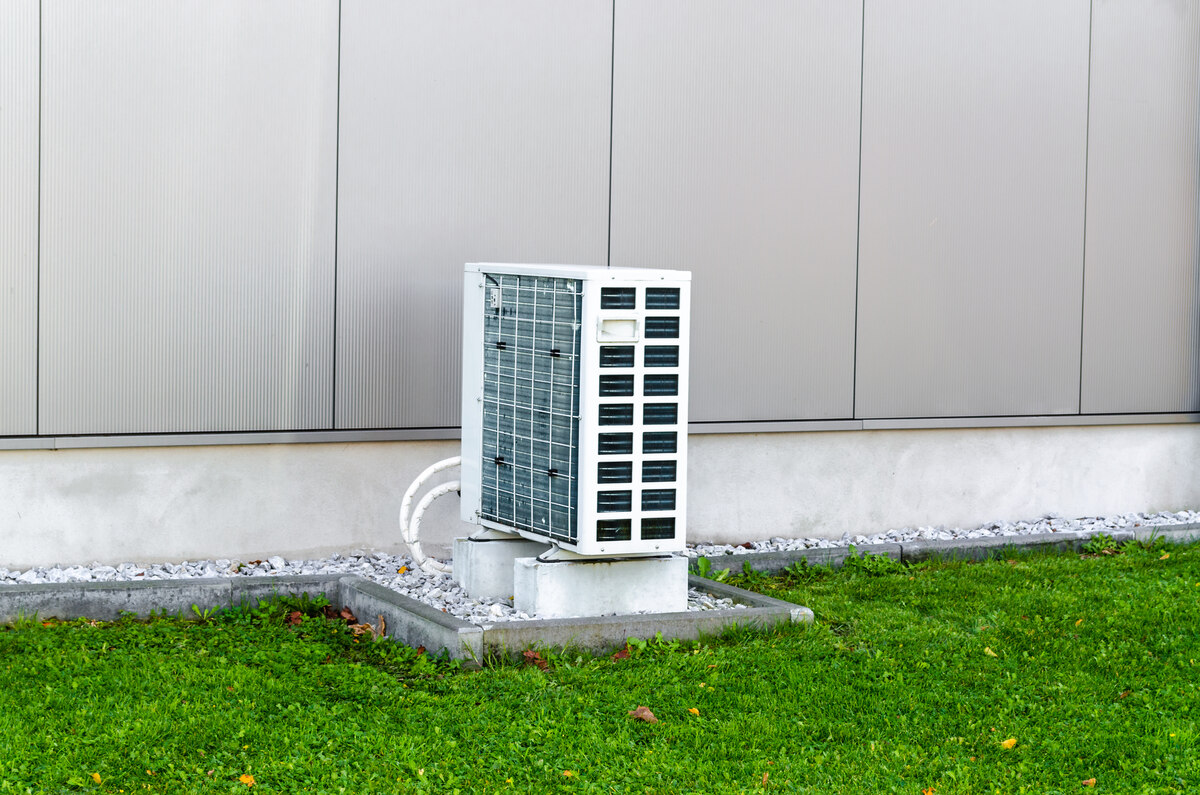Home>Home Maintenance>How Vehicle Air Conditioning Works


Home Maintenance
How Vehicle Air Conditioning Works
Modified: March 6, 2024
Learn how vehicle air conditioning works with this comprehensive guide. Discover the key components and maintenance tips for optimal performance.
(Many of the links in this article redirect to a specific reviewed product. Your purchase of these products through affiliate links helps to generate commission for Storables.com, at no extra cost. Learn more)
Introduction
Welcome to our comprehensive guide on how vehicle air conditioning works. In today’s fast-paced world, it’s essential to have a comfortable and cool environment inside our cars, especially during hot summer months. Vehicle air conditioning systems play a crucial role in providing us with a pleasant driving experience.
Have you ever wondered how that cold blast of air magically appears when you crank up the A/C in your car? In this article, we will delve into the workings of vehicle air conditioning systems and explain the basic components and principles behind their functionality.
Understanding how vehicle air conditioning works can help you appreciate this technology and troubleshoot any issues that may arise. So, let’s get started with a closer look at the basic components of a vehicle’s A/C system.
Key Takeaways:
- Vehicle air conditioning systems work by circulating refrigerant through key components like the compressor, condenser, and evaporator to remove heat from the cabin and provide cool air for a comfortable driving experience.
- To maintain your vehicle’s air conditioning system, regularly inspect and clean components, check for leaks, and have the refrigerant topped up as needed. Troubleshoot issues like ineffective cooling, warm air, or unusual odors to ensure optimal performance.
Read more: How Evaporative Air Conditioning Works
Basic Components of Vehicle Air Conditioning
A vehicle’s air conditioning system consists of several key components that work in harmony to provide cool and comfortable air. Here are the main components:
- Compressor: The compressor is the heart of the A/C system. It is typically driven by the engine’s serpentine belt and is responsible for compressing the refrigerant gas, raising its temperature and pressure.
- Condenser: The condenser is located at the front of the vehicle, usually in front of the radiator. Its primary function is to dissipate heat and convert the high-pressure refrigerant gas into a high-pressure liquid.
- Receiver/Dryer: The receiver or dryer serves as a storage and filtering unit for the refrigerant. It removes any moisture or contaminants from the refrigerant before it enters the expansion valve.
- Expansion Valve: The expansion valve is responsible for regulating the flow of refrigerant into the evaporator. It reduces the pressure of the liquid refrigerant, causing it to evaporate and cool down.
- Evaporator: The evaporator is usually located inside the vehicle’s cabin, typically behind the dashboard. It acts as a heat exchanger, absorbing heat from the air and causing the refrigerant to evaporate, thus cooling the air inside the car.
- Blower Motor: The blower motor is responsible for pushing air through the evaporator and into the cabin. It provides the necessary airflow for the A/C system to function effectively.
- Controls and Sensors: These include the A/C controls on the dashboard, temperature sensors, and pressure sensors. They help regulate the system’s operation and ensure optimal performance.
These components work together to create a closed loop system where the refrigerant continuously cycles, absorbing heat from the cabin and dissipating it outside, resulting in a cool and comfortable environment inside the vehicle.
Now that we have discussed the basic components, let’s explore the refrigeration cycle and understand how cooling is achieved in a vehicle air conditioning system.
The Refrigeration Cycle
The refrigeration cycle is the fundamental process that allows a vehicle’s air conditioning system to cool the air inside the cabin. It involves the continuous flow and transformation of refrigerant through different stages. Here are the key steps of the refrigeration cycle:
- Compression: The process begins with the compressor, which compresses the refrigerant gas, increasing its temperature and pressure. This compressed gas is then directed to the condenser.
- Condensation: In the condenser, the high-pressure refrigerant gas releases heat to the surrounding air, causing it to liquefy and transform into a high-pressure liquid. The condenser’s job is to dissipate the heat effectively.
- Expansion: The high-pressure liquid refrigerant then moves into the expansion valve, where its pressure is reduced. This reduction in pressure causes the refrigerant to vaporize and cool down significantly.
- Evaporation: The now cool and low-pressure refrigerant enters the evaporator inside the vehicle’s cabin. As air from the cabin flows over the evaporator, heat is absorbed from the air, causing the refrigerant to evaporate and cool the air.
- Compression (Again): The cooled air is blown into the cabin by the blower motor, providing a comfortable and refreshing temperature. Meanwhile, the refrigerant, which has now turned back into a gas, gets sucked back into the compressor to restart the cycle.
This continuous cycle allows the A/C system to remove heat from the cabin and provide cool air. It’s important to note that the refrigerant plays a crucial role in this process, as it undergoes phase changes and transfers heat throughout the system.
Now that we understand the refrigeration cycle, let’s explore how the temperature and airflow are regulated to ensure optimal comfort inside the vehicle.
How Cooling is Achieved
Cooling in a vehicle’s air conditioning system is achieved by effectively regulating the temperature and airflow inside the cabin. Here’s how it works:
- Temperature Regulation: The temperature is regulated by the A/C controls on the dashboard, which allow the driver and passengers to adjust the desired temperature. When a lower temperature is selected, the A/C system operates to remove heat from the cabin by absorbing it through the evaporator. As a result, cooled air is blown into the cabin, reducing the overall temperature.
- Air Regulation: The airflow inside the cabin is regulated by the blower motor and various ventilation controls. The blower motor, powered by the vehicle’s electrical system, pushes air over the evaporator, cooling it down. The cooled air is then distributed throughout the cabin using vents and air ducts, providing even airflow for maximum comfort.
- Recirculation: Many modern vehicles have a recirculation mode, which allows the A/C system to recirculate the already cooled air inside the cabin. By doing so, the system doesn’t have to work as hard to cool the incoming air from outside, leading to quicker and more efficient cooling.
- Automatic Climate Control: Some vehicles are equipped with automatic climate control systems. These advanced systems use various sensors to monitor the cabin temperature, outside temperature, and humidity levels. They adjust the A/C system’s operation automatically to maintain the desired temperature and keep the cabin comfortable.
By effectively regulating the temperature and airflow, the A/C system ensures that the cabin remains cool and comfortable, regardless of the external conditions. However, it’s important to note that extreme ambient temperatures and prolonged use of the A/C system can put strain on the components and reduce its overall efficiency.
Now that we have explored how cooling is achieved in a vehicle air conditioning system, let’s move on to discussing maintenance and troubleshooting tips to keep your A/C system functioning optimally.
Regular maintenance of your vehicle’s air conditioning system, including checking refrigerant levels and cleaning the condenser, can help ensure it works efficiently and keeps you cool on hot days.
Temperature and Air Regulation
Temperature and air regulation are essential aspects of a vehicle’s air conditioning system. Let’s take a closer look at how these factors are controlled and maintained:
Temperature Regulation: The temperature inside the vehicle can be controlled through the A/C controls on the dashboard. These controls typically include a temperature dial or buttons, allowing the driver and passengers to set their desired temperature. The A/C system then works to achieve and maintain this temperature by adjusting the operation of the compressor, expansion valve, and blower motor.
For optimal comfort, it’s important to find the right balance and not set the temperature too low or too high. Setting the temperature too low can result in excessive cooling and discomfort, while setting it too high may not provide adequate cooling during hot weather.
Air Regulation: The airflow inside the vehicle is regulated by the blower motor and various ventilation controls. The blower motor provides the necessary airflow to push the cooled air from the evaporator into the cabin. The speed of the blower motor can usually be adjusted through the A/C controls, allowing you to increase or decrease the airflow based on your preference.
Furthermore, many vehicles feature adjustable vents that allow you to direct the airflow to specific areas within the cabin. These vents can be adjusted or closed to control the direction and intensity of the air coming from the A/C system. By strategically adjusting the vents, you can ensure that the air is distributed evenly and directed where it is needed most.
Additionally, some vehicles offer separate temperature and airflow controls for the driver and passengers, allowing individual comfort preferences to be met. This can be especially useful in situations where different passengers have varying temperature preferences.
To maintain optimal temperature and airflow regulation, it’s recommended to regularly inspect and clean the vents to ensure proper air distribution. Clogged or blocked vents can restrict airflow and reduce the efficiency of the A/C system.
Now that we have discussed the temperature and air regulation aspects of a vehicle’s air conditioning system, let’s move on to maintenance and troubleshooting tips to help keep your A/C system in top shape.
Read more: How Does Home Central Air Conditioning Work
Maintenance and Troubleshooting
Maintaining and troubleshooting your vehicle’s air conditioning system is essential to ensure its optimal performance and longevity. Here are some maintenance tips and troubleshooting guidelines:
Regular Maintenance:
- Have your A/C system inspected and serviced by a qualified technician at least once a year, or as recommended by the vehicle’s manufacturer.
- Regularly check the A/C system’s refrigerant level and have it topped up if necessary. Insufficient refrigerant can lead to poor cooling performance.
- Keep the condenser clean and free of debris. Use a hose or compressed air to remove any dirt or debris that may accumulate on its surface, obstructing airflow.
- Inspect the A/C system’s drive belts for signs of wear or cracking. Replace them if necessary, as worn belts may affect the performance of the compressor.
- Check for any leaks in the system, such as refrigerant leaks, and have them repaired promptly. Leaks can lead to reduced cooling efficiency and potential damage to other components.
Troubleshooting Tips:
- If your A/C system is not cooling effectively, check the temperature setting on the controls to ensure it is not set too high. Adjust the setting if necessary.
- Check the blower motor to make sure it is functioning properly. If the air is not blowing adequately, it may indicate a problem with the blower motor or its electrical connections.
- If the A/C system is blowing warm air, it may indicate a refrigerant leak or a problem with the compressor. Have the system inspected by a professional technician to diagnose and resolve the issue.
- If you notice unusual odors coming from the A/C system, it may be a sign of mold or bacteria growth. Consider having the system cleaned and treated to eliminate any odor-causing contaminants.
- In case of any unusual noises coming from the A/C system, such as squealing or grinding sounds, it could indicate a faulty component or a loose belt. Have it checked by a professional for proper diagnosis and repair.
Remember, if you lack experience or proper tools, it’s always best to consult a qualified technician for any maintenance or troubleshooting tasks related to your vehicle’s air conditioning system. They have the expertise and knowledge to identify and resolve issues effectively.
By following these maintenance tips and troubleshooting guidelines, you can keep your vehicle’s air conditioning system in optimal condition and enjoy a cool and comfortable ride, regardless of the weather.
Now that we have covered the essential aspects of maintaining and troubleshooting a vehicle’s air conditioning system, let’s conclude our guide.
Conclusion
A vehicle’s air conditioning system is a vital component that ensures a comfortable and pleasant driving experience, especially during hot weather. Understanding how the system works, its basic components, and the refrigeration cycle can help you appreciate the technology behind it.
We explored the basic components of a vehicle air conditioning system, including the compressor, condenser, expansion valve, evaporator, and blower motor. These components work together in a closed-loop system to remove heat from the cabin and provide cool air.
The refrigeration cycle, involving compression, condensation, expansion, and evaporation, is the fundamental process that enables the A/C system to cool the air inside the vehicle. By regulating temperature and airflow, the system ensures optimal comfort for the driver and passengers.
Maintaining your vehicle’s air conditioning system is essential for its efficient performance. Regular maintenance, such as inspections, cleaning, and topping up refrigerant, can help prolong the lifespan of the system and prevent potential issues. Troubleshooting tips, including checking temperature settings, inspecting blower motors, and addressing leaks, can help identify and resolve common problems.
Remember, if you’re unsure or lack experience, it’s always best to consult a qualified technician for any maintenance or troubleshooting tasks. They have the knowledge and expertise to handle the complex components of the A/C system.
By following these guidelines, you can ensure that your vehicle’s air conditioning system provides reliable cooling, making your journeys enjoyable regardless of outside temperatures.
We hope this comprehensive guide has provided you with valuable insights into how vehicle air conditioning works. Stay cool and drive comfortably!
Frequently Asked Questions about How Vehicle Air Conditioning Works
Was this page helpful?
At Storables.com, we guarantee accurate and reliable information. Our content, validated by Expert Board Contributors, is crafted following stringent Editorial Policies. We're committed to providing you with well-researched, expert-backed insights for all your informational needs.

